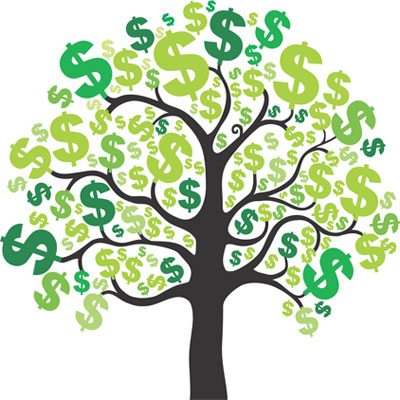
Noble Laureate Mohammad Yunus revolutionised banking and made a place for himself in history when he suggested a loan credit system that caters exclusively to the poor. A programme that has been duplicated all over the world, it focuses on lending small amounts of money at minimum or no interest rates to those who have otherwise been excluded from the traditional banking systems for the lack of financial collateral.
How does it work?Most commercial banks do not offer loans without first verifying the applicant's ability to pay it back or against substantial collateral, such as property or gold. This process alienates most of the underprivileged who do not even have access to basic amenities necessary for survival, let alone financial assets to provide as sureties.
Realising this, and the entrepreneurial potential of the rural populations Mohammud Yunus was one of first pioneers to implement such a credit system that lends small amounts to the poor to help run small businesses. In his book Banker to the Poor, Yunus explained, “If you go out into the real world, you cannot miss seeing that the poor are poor not because they are untrained or illiterate but because they cannot retain the returns of their labour. They have no control over capital, and it is the ability to control capital that gives people the power to rise out of poverty.”
Can micro loans boost economy and end poverty?Developmental economist Kabira Namit is one of the many experts who thinks so. “I think that micro-lending offers enormous potential for supporting entrepreneurship in deprived communities across the world. The innovation of peer to peer lending through NGOs like Kiva, Lend for Peace and Zidisha offer individuals an opportunity to lend across international borders through the internet. As most of these organisations don't charge an administration fee, your entire money goes towards the loan amount and people can start lending for as low as Rs1500.”
Yunus raised the question, time and again—what good does the theory of economics do if it is not working for people? And he isn't alone in taking that stand. Viewing micro-credit as a progressive financial innovation, many economists are confident that it holds the potential to remove conditions of poverty.
Word of cautionNamit advises caution, “Lending model of the companies offering the loans needs to be examined carefully. High interest rates can create modern day corporate loan sharks that lead poor families into debt traps. Loans that focus on investment (buying more cattle, fertiliser) rather than consumption spending (financing marriages) are crucial as they are likely to be productive and lead to sustained higher incomes.”
================================================
How does it work?Most commercial banks do not offer loans without first verifying the applicant's ability to pay it back or against substantial collateral, such as property or gold. This process alienates most of the underprivileged who do not even have access to basic amenities necessary for survival, let alone financial assets to provide as sureties.
Realising this, and the entrepreneurial potential of the rural populations Mohammud Yunus was one of first pioneers to implement such a credit system that lends small amounts to the poor to help run small businesses. In his book Banker to the Poor, Yunus explained, “If you go out into the real world, you cannot miss seeing that the poor are poor not because they are untrained or illiterate but because they cannot retain the returns of their labour. They have no control over capital, and it is the ability to control capital that gives people the power to rise out of poverty.”
Can micro loans boost economy and end poverty?Developmental economist Kabira Namit is one of the many experts who thinks so. “I think that micro-lending offers enormous potential for supporting entrepreneurship in deprived communities across the world. The innovation of peer to peer lending through NGOs like Kiva, Lend for Peace and Zidisha offer individuals an opportunity to lend across international borders through the internet. As most of these organisations don't charge an administration fee, your entire money goes towards the loan amount and people can start lending for as low as Rs1500.”
Yunus raised the question, time and again—what good does the theory of economics do if it is not working for people? And he isn't alone in taking that stand. Viewing micro-credit as a progressive financial innovation, many economists are confident that it holds the potential to remove conditions of poverty.
Word of cautionNamit advises caution, “Lending model of the companies offering the loans needs to be examined carefully. High interest rates can create modern day corporate loan sharks that lead poor families into debt traps. Loans that focus on investment (buying more cattle, fertiliser) rather than consumption spending (financing marriages) are crucial as they are likely to be productive and lead to sustained higher incomes.”
================================================

No comments:
Post a Comment